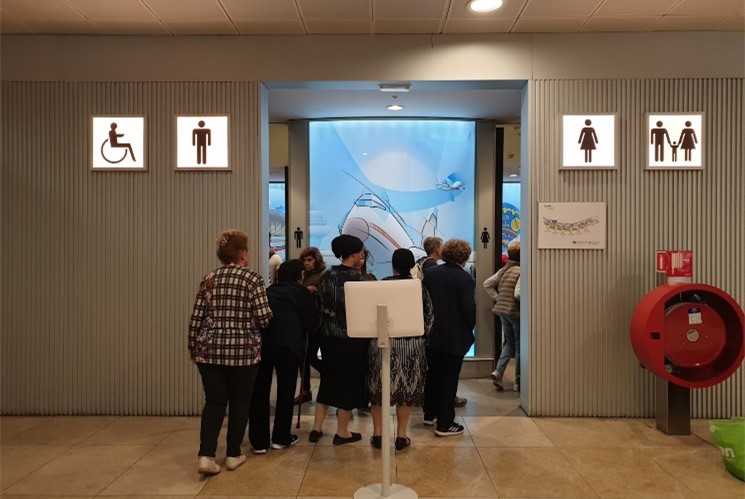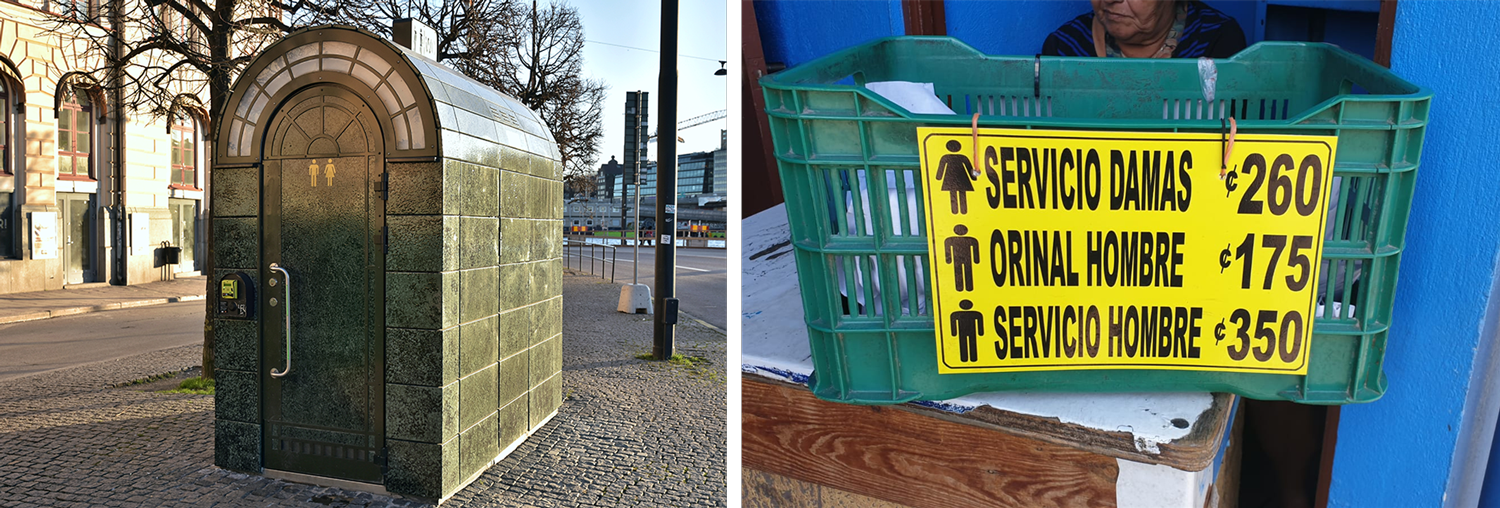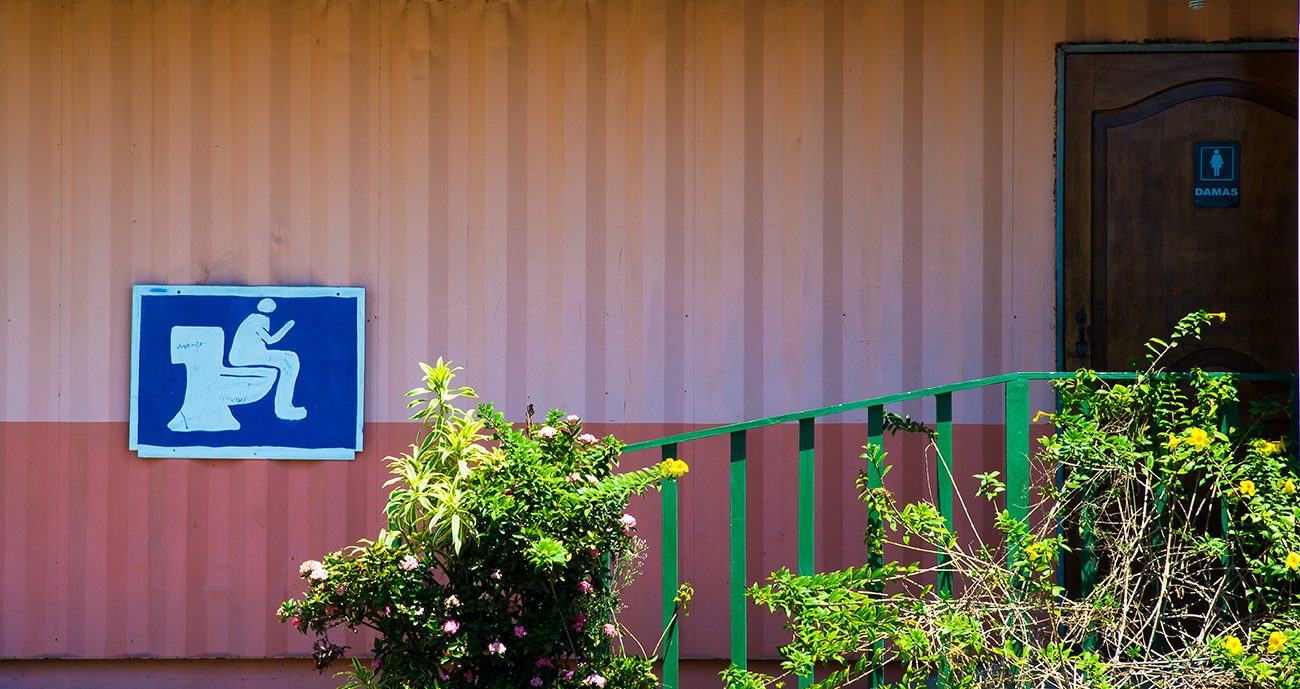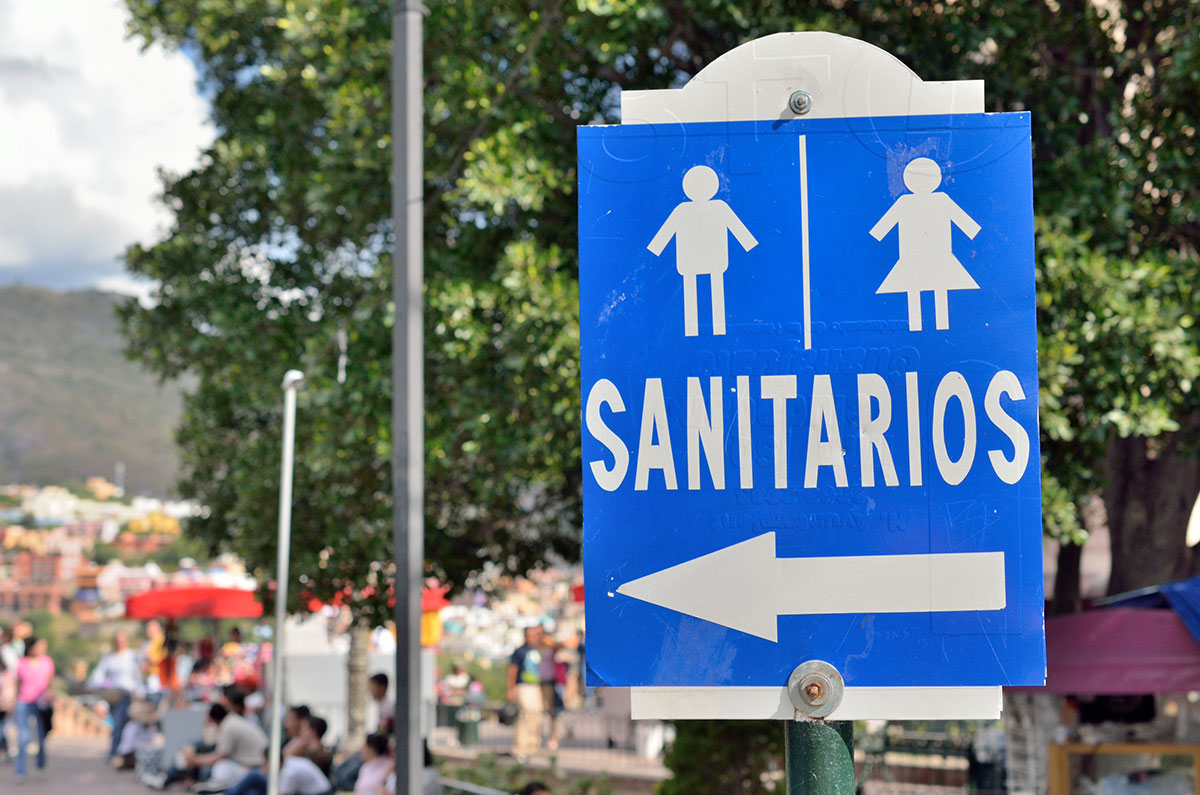Toilets in public places, how long do we have to hold it?

2. Accessibility
Most countries have regulations regarding the design of accessible toilets. However, there is almost no control to verify that the toilets classified as “accessible” comply with the regulations. This results in people with special needs not being able to access those facilities which is a great discrimination.
3. Affordability
The tariff is not always the same for everyone. In some cities, urinals mostly used by men are free and openly accessible, but toilet stalls used mostly by women and people with reduced mobility are chargeable. In other cases, there can be different fees for women and men or if you need to urinate or defecate. All these criteria represent major discriminations. An interesting initiative that is often neglected by cities is the existence of solidarity payment mechanisms: users can pay extra in advance to cover for someone else who would not be able to afford the fee.

4. Quality and safety
There are large differences between cities. In the case of Latin America, the infrastructure is often of low quality, with no continuous water or hygiene products, often dirty and not well maintained. This contributes to a vicious circle in which, the lack of cleanliness, prevents people from using the toilets in public places; as they are hardly used, municipalities do not invest in them; as there is no investment, the quality deteriorates. The lack of maintenance can also lead to making the space less safe so even less used by the population.
5. Acceptability
One of the big issues in terms of acceptability, privacy and dignity is the existence of unisex toilets, accessible to all regardless of gender. At a cultural level, many people express being against unisex toilets, for safety or privacy issues. Older women especially say that they do not feel comfortable sharing toilets with men. However, for the LGBTQI+ community, unisex toilets could indeed provide a safer space for trans and non-binary people, not forcing them to chose a toilet on the basis of sex. To solve this dilemma, many cities have opted to convert accessible toilets into unisex toilets, thus offering three options for users: keeping non-accessible toilets divided by women/ men, while offering a unisex toilet for those who need it.
A future with clean and accessible toilets for all
In the coming years we will deepen our work with the cities of San José and Barranquilla to improve toilet access in public spaces. We are mapping more than 200 facilities in each city to understand the main challenges and find solutions. In collaboration with local governments, public health authorities, service providers, regulators, and different user groups, we are designing measures to create cities with more sustainable, healthier, fairer and more inclusive sanitation services. In short, better cities for all, where we no longer have to hold it.
Sanitation in public spaces
This project studies different cities in Latin America to promote a more inclusive, affordable, safe, and accessible provision of toilets in public spaces.
Learn more about this project







